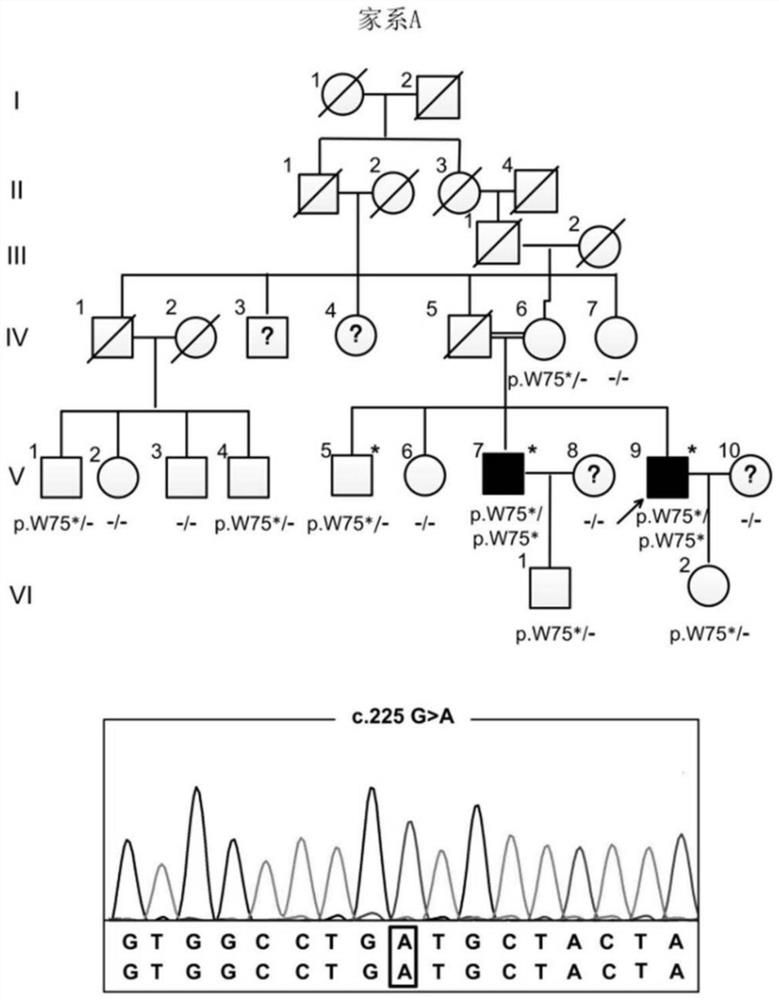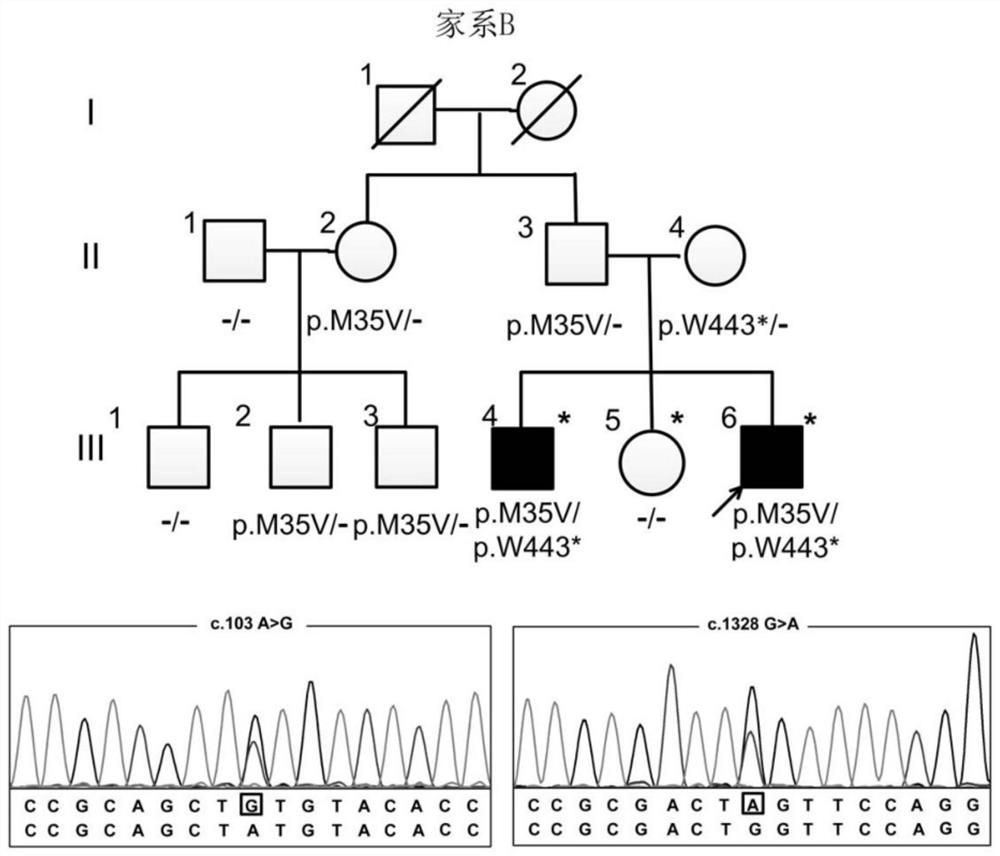Human PFBC pathogenic gene MYORG with mutation at 1328th locus and application of human PFBC pathogenic gene MYORG
A mutated gene, human technology, applied in the field of the pathogenic mutation form of the pathogenic gene MYORG, can solve the problems of calcification, calcification deposition, abnormal protein glycosylation metabolism, etc., and achieve the effect of simple and effective detection
- Summary
- Abstract
- Description
- Claims
- Application Information
AI Technical Summary
Problems solved by technology
Method used
Image
Examples
Embodiment 1
[0027]Example 1 Preliminary identification of pathogenic genes in PFBC families A and B using whole exome sequencing
[0028]According to the detailed medical history and family history investigation, as well as the standardized nervous system physical examination and related auxiliary examination information, two PFBC family samples were collected for pathogenic gene detection and analysis.
[0029](1) Sample information of PFBC family A and B
[0030]The inventors first started with two autosomal recessive PFBC families (family A and B). After testing, no known pathogenic genes (SLC20A2, PDGFRB, PDGFB and XPR1) were detected in PFBC patients in these two families. The related mutations suggest that there may be a new PFBC pathogenic gene. Among them, family A contains 2 PFBC patients (numbered V7 and V9, V9 is a proband), both of which are manifested as globus pallidus and large calcification of cerebellum (Figure 7 ), dysarthria, ataxia, and his parents are close relatives married. There ...
Embodiment 2
[0035]Example 2 Sanger method sequencing to verify MYORG pathogenic gene mutations in PFBC families A and B
[0036]Since only MYORG is a gene shared in these two families (family A and B), the inventors used the kit and method proposed by the present invention to amplify the gene fragment where the mutation is located (see Example 6 for the specific kit and method) , Using Sanger sequencing to further verify MYORG gene mutations in 12 related members of family A (PFBC patients: V7, V9, non-PFBC members: IV6, IV7, V1, V2, V3, V4, V5, V6, VI1, VI2) And testing. It was found that two patients in family A did contain c.225G of MYORG gene>A homozygous mutation, and the remaining 10 normal persons in the family were not found to carry the homozygous mutation at this locus, indicating that the MYORG gene mutation co-segregated with the disease phenotype in this family. Among them, the 225th base G mutation of MYORG gene was found to be A, that is, c.225G>A is a new mutation of the gene, whic...
Embodiment 3
[0037]Example 3 Screening of MYORG pathogenic gene mutations in other PFBC families
[0038]Since only MYORG is a gene shared in families A and B, we further expanded the family sample verification, and performed the MYORG full coding region for probands with 8 autosomal recessive PFBC families and 3 families with unknown inheritance. Mutation screening. According to MYORG's wild-type gene coding sequence SED ID NO:1, the primer pair SED ID NO:21-28 was designed to amplify the entire coding region sequence, and Sanger sequencing was performed. The primer pair amplification system and conditions shown in SED ID NO: 27-28 are the same as SED ID NO: 21-26 (see Example 6 for specific kits and methods). The probands of the four families of C, D, E, and F all contained compound heterozygous or homozygous mutations in the MYORG gene. Two compound heterozygous mutations in the MYORG gene were found in the C family, one of which is c.225G>A (same family A), the second is c.1321C>G is the mutati...
PUM
 Login to View More
Login to View More Abstract
Description
Claims
Application Information
 Login to View More
Login to View More - R&D
- Intellectual Property
- Life Sciences
- Materials
- Tech Scout
- Unparalleled Data Quality
- Higher Quality Content
- 60% Fewer Hallucinations
Browse by: Latest US Patents, China's latest patents, Technical Efficacy Thesaurus, Application Domain, Technology Topic, Popular Technical Reports.
© 2025 PatSnap. All rights reserved.Legal|Privacy policy|Modern Slavery Act Transparency Statement|Sitemap|About US| Contact US: help@patsnap.com



